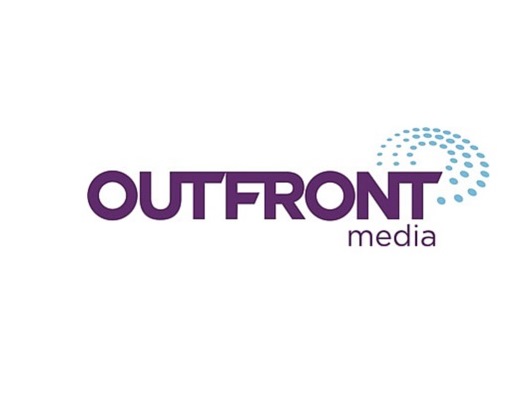Digital Advertising: An Evolutionary Path Forward

To no one’s surprise, advertising dollars continue to move toward digital. Digital, as defined by most media watchers today, includes only mobile and web options. Of the almost $170 billion spent in 2013 on advertising within the US, ~25% was directed toward digital. In 2014, eMarketer expects that number to increase to ~28%. Ten years ago it was just over 5%. This movement is a reflection of marketers' desire to "invest" money in advertising where content is easy to deploy, where more detailed audience analytics are available and where an ROI can be calculated. Gaining access to these metrics satisfies a CFO's desire to debunk John Wanamaker's famous quote about half of his marketing spend being wasted.
But as we recently found out, not all of these metrics are as dependable as we had originally thought or even hoped. Digital ads are not always reaching their intended audience. Low view-ability and even lower click-through rates bring into question the effectiveness of these mediums -- and thus their value. comScore has indicated that up to 50% of online ads are never seen. In a recent article by David Benady in Campaign, he quoted a piece by the Thinkbox chair Tess Alps, who described online advertising as being in a "parlous state." She also expressed concerns about "creepy addressable advertising, irritating pop-ups, ugly ads and the use of ad-blocking software such as AdBlock Plus, which is used by 300 million people.” She called on brands and agencies to use their budgets to "rebuild an advertising landscape to be proud of."
As an advertising industry, we have been working hard to evolve several pillars within the new digital landscape. Web and mobile were just the first, arguably the easiest and of course the least expensive digital deployments -- but certainly not the last. Technology improvements and significantly more cost efficient hardware now provide for the delivery of advertising content to many more screens, quickly and in more appropriate scale-able formats. Data collection, and the ever more sophisticated algorithms around it, compliment the new screen formats so that they will be able to return CFO-type assurances that media dollars are being spent appropriately.
All screens are equally addressable under the new landscape. They are now to be defined by the audiences that they reach, rather than just their location. Larger screens (billboards/cinema) are more engaging and are less likely to be turned off or ignored, while smaller screens (mobile/PC) have more analytics and are easier to have content delivered to them. As these lines blur, our ecosystem becomes more dynamic!
The defining characteristics of Digital Advertising regardless of screen type should be:
• It should be easy to buy through a web UI or an app, anytime, anywhere and via any device.
• Content is delivered from, and dynamically rendered in, the cloud for multiple required screen formats.
• Media should be bought based upon deep audience analytics rather than by location. (When applied, all screens across different media -- billboards, web, cinema, mobile, bus shelters, etc. -- should be able to be purchased in combination.)
• Proof-of-Play and Performance delivery should be instantaneous.
• Real-time dashboard views (specific to each end-user) should be available to all involved parties.
As an exciting addition to this ecosystem, and possessing all of the elements above, newly available out-of-home display screen technology is now smart. It connects each panel to the cloud and those panels run apps, effectively turning each screen/billboard into an "iPad on the wall." While exciting, fun and giving advertisers a new canvas upon which they can create next generation content, it is the low cost nature of these screens that makes them the new frontier for advertisers.
As we all know, ubiquity is the third element of advertising beyond reach and frequency. Truly mass scale deployment of digital, other than in the mobile and web space, could not be done -- until now. Building upon the foundation of our industry’s broad real estate portfolio, this new cost dynamic will put ADOOH (Advanced Digital Out Of Home) in the same category as mobile and web when it comes to addressable dynamic scaled media. Advertisers should be able to buy a billboard, a transit station, a subway car, a movie theatre, hotel lobby and a web page all with a single set of search criteria around a specific campaign, driven by sophisticated audience analytics and through the same portals. But the ADOOH screens will not be plagued with the perils of web and mobile. ADOOH can guarantee play, is directly in front of targeted audiences and has no pop-up blockers or DVRs with which to contend.
Outfront Media recently acquired certain new technology from Videri. With this new hardware, an intelligent data analytics engine and robust software architecture, we are bringing all of these ADOOH characteristics to market with our new Platform. The Platform connects existing screens and billboards and new innovative highly functional low cost screen hardware, with an operating system and connector interface that provides "The Performance of Digital at the Price of PaperSM," the objective of which is to quickly achieve mass scale and to empower clients and agencies with the same tools that they use in current mobile and web ecosystems.
A truly differentiated and scalable model was required to change the industry for the better. To date, our industry had been using off-the-shelf software supplied by entrepreneurial but small companies, combined with closed-loop server-based distribution, displayed on large format LEDs and consumer televisions adapted for commercial use. Multiple variations on 1.x solutions cobbled together from different providers will not scale and innovate exponentially, and thus it will not bring more advertisers and their ever increasing digital media budgets to the OOH space. As an industry we needed a change of thinking in order to provide more value and more functionality to our clients. ADOOH should be as easy to buy as a web ad and as targeted as a mobile campaign with all of the associated metrics to support its use -- taking advantage of progressive ad-tech models. We need to be “Digital by Nature SM.”
We look forward to introducing you to our Outfront Digital Platform and invite you to experience the transformation.
The opinions and points of view expressed in this commentary are exclusively the views of the author and do not necessarily represent the views of MediaVillage/MyersBizNet management or associated bloggers.


